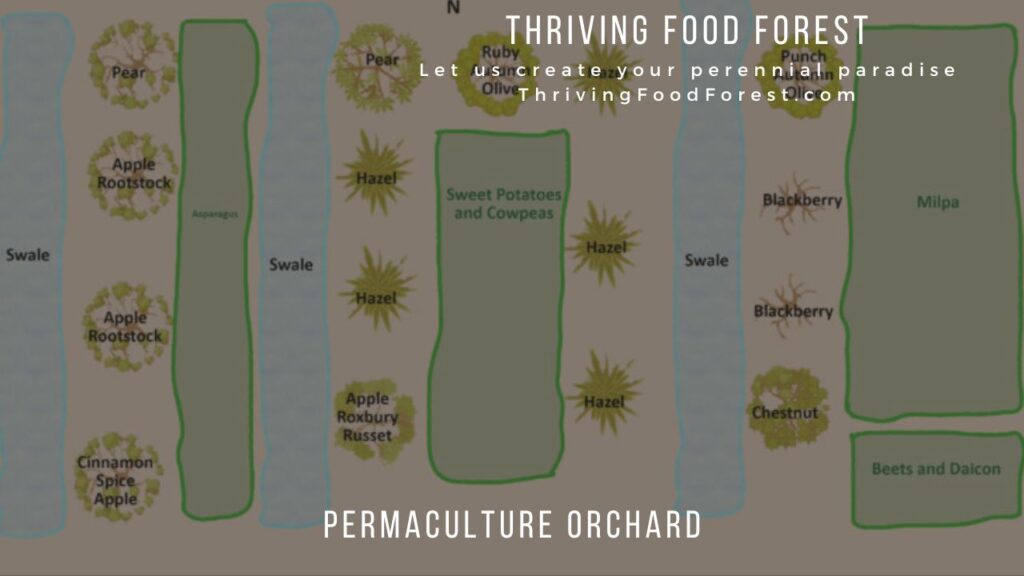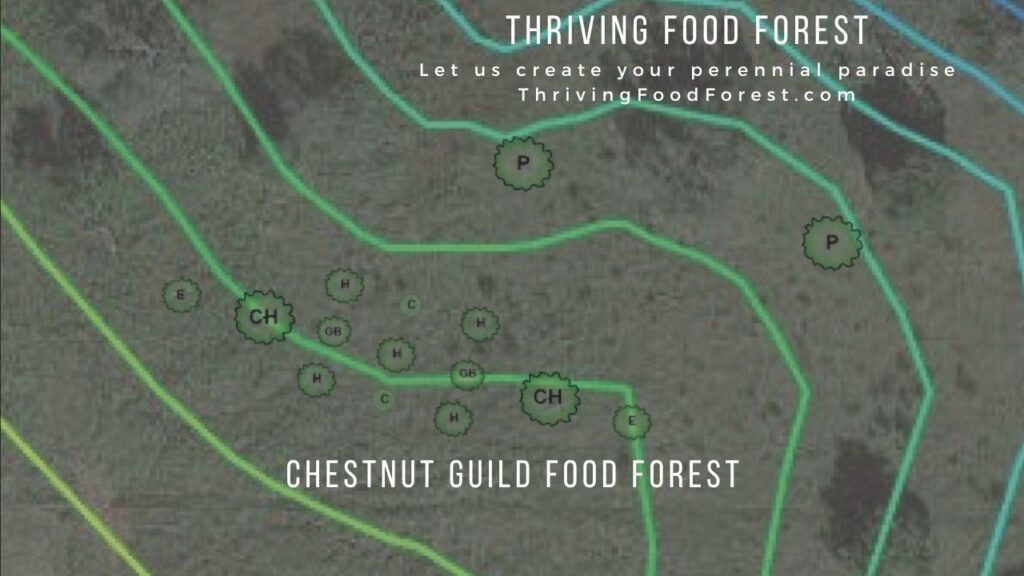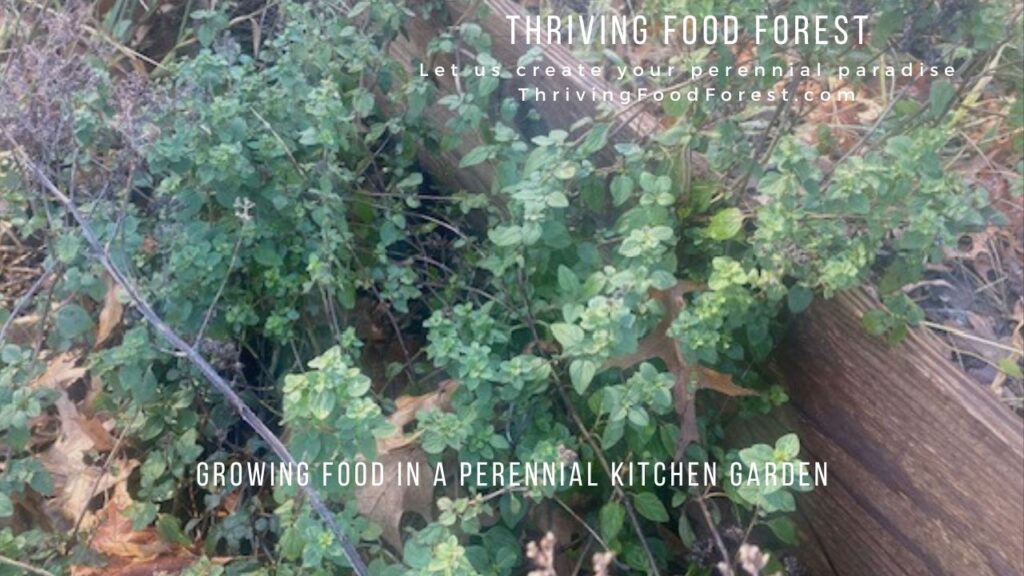GOAL: To extend a homestead permaculture orchard by 80 feet with these desired plants:
Chestnuts, apples, pears, hazelnuts, asparagus, herbs like Wormwood and mint, comfrey, blackberries, Milpa garden beds, and annual beds.
This was the initial design:
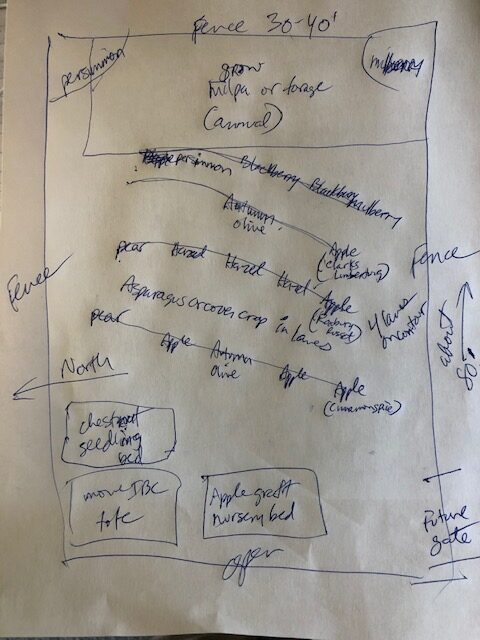
This section is fenced in:
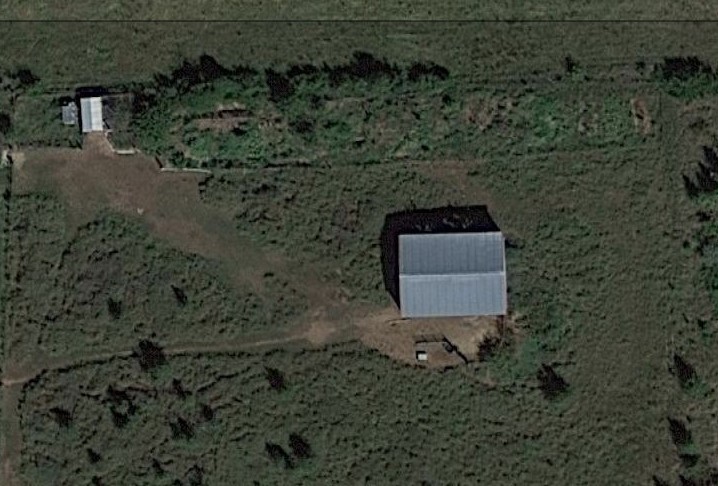
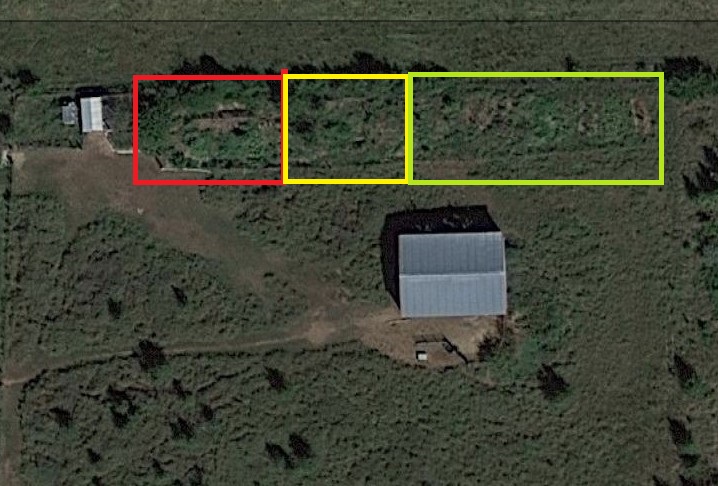
The Red area is an annual garden. The Yellow area is a previously created small food forest with chestnuts, bush cherries, and raspberries.
The Green area is a new area fenced off in 2021 to extend the garden area into a permaculture orchard.
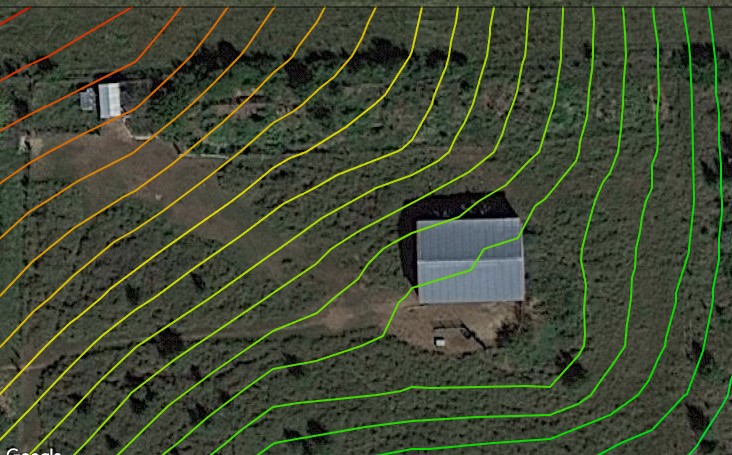
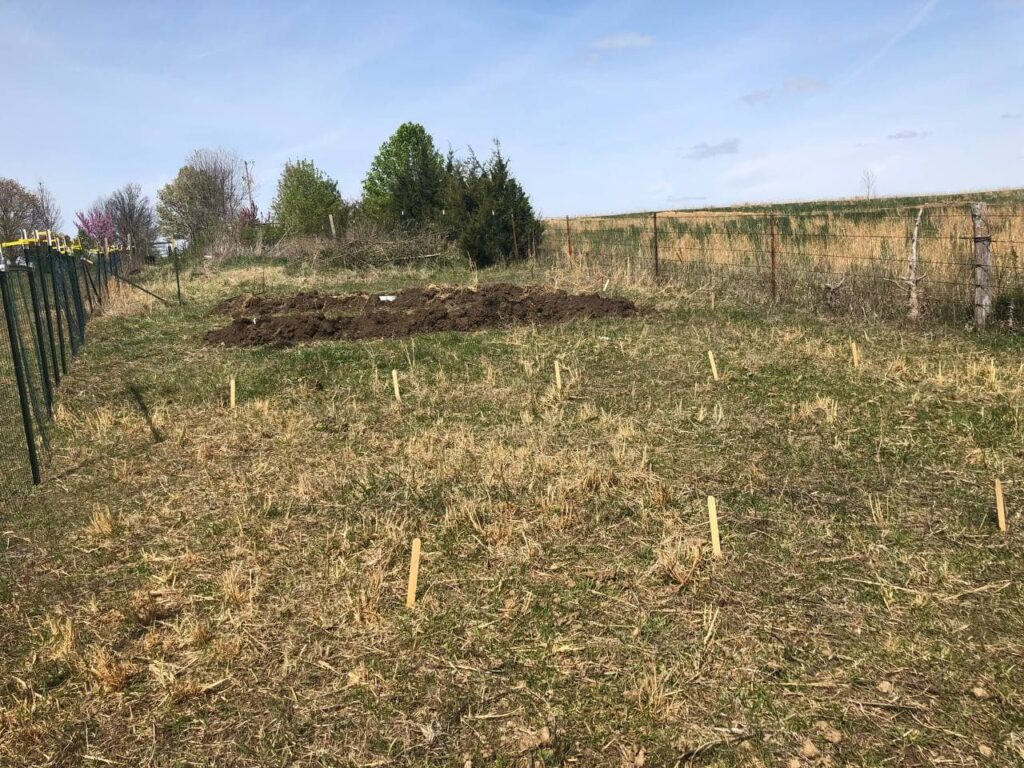
Digging swales
I hand dug all of the swales and mounds. Starting uphill, I used a broadfork to create a swale area two broadforks wide. I double-dug down and then used the shovel to dig out the dirt and pile it all up on the mound.
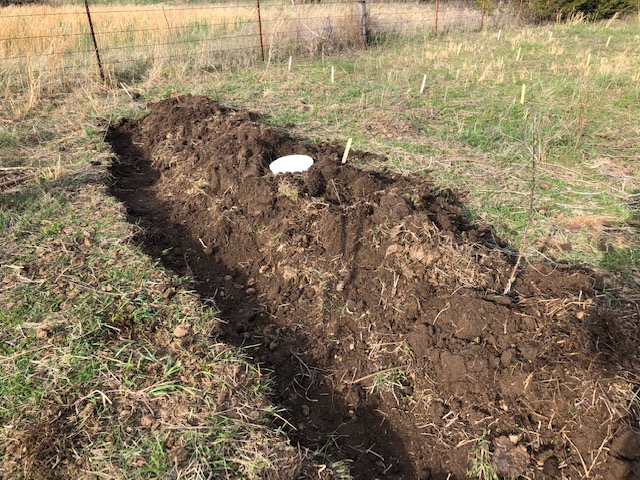
Planting into the swales and mounds
I planted trees and bushes into the mounds, sowed buckwheat as a cover crop in the gaps and in the swale, then covered with wood chips.
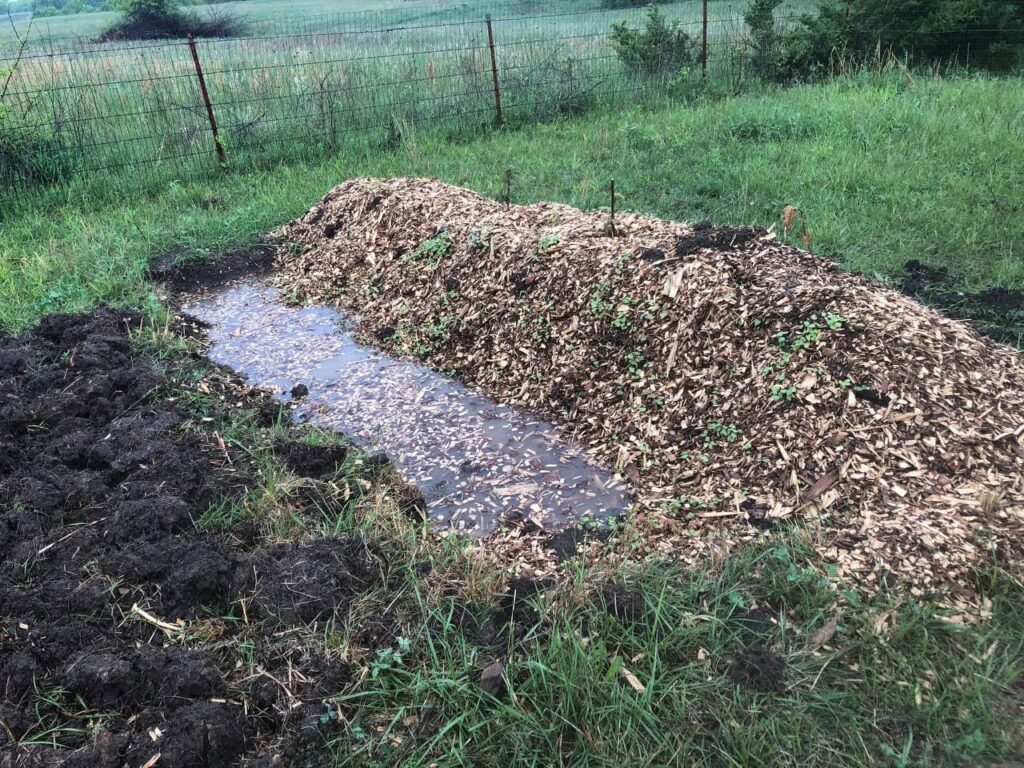
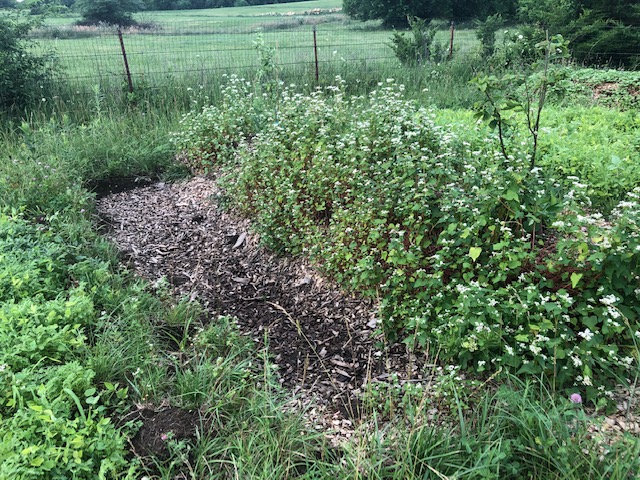
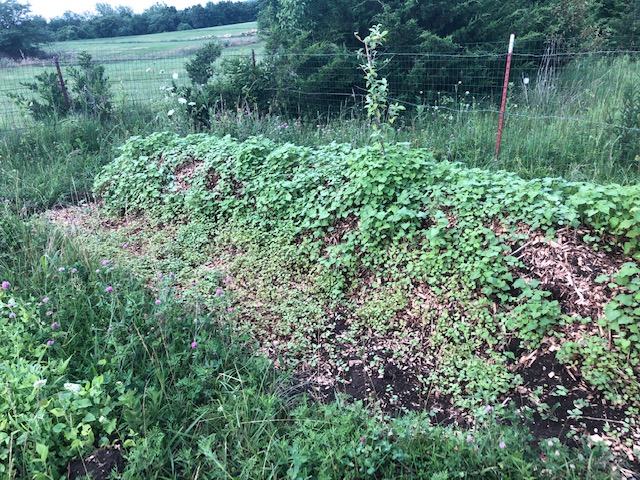
I sowed asparagus and annuals in some of the lanes.
Here is how I used Milpa as a cover crop and got a multi-month harvest of different veggies.
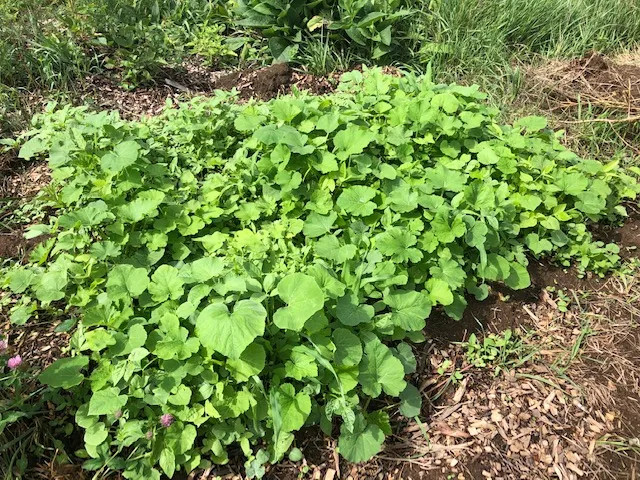
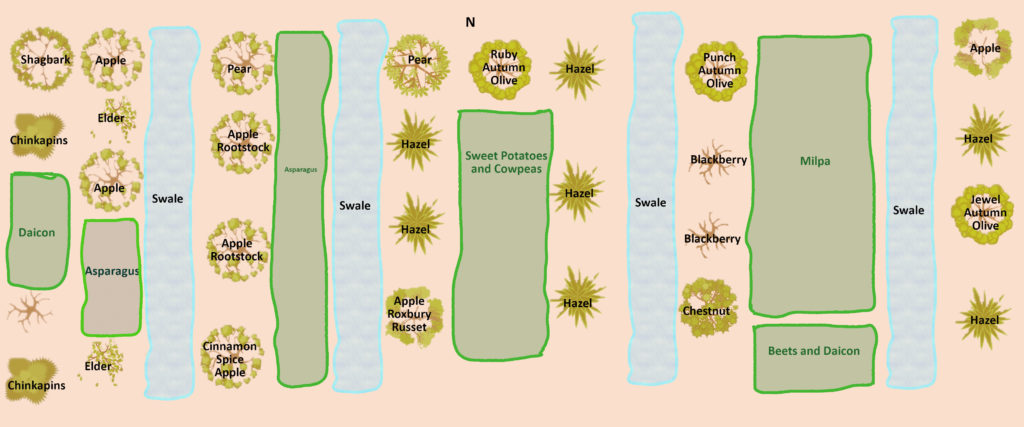
Lessons learned:
Grafted apples do not like the STUN method (Sheer Total Utter Neglect). In KS they usually need extensive irrigation. These swales were one of the few times that I have had widespread success with apples.
The chestnut trees did fairly well planted in the mounds with swales. Hazels failed or were eaten down by deer, who found a way over the fence.
Asparagus didn’t last, even after being replanted and reseeded the next season.
A lot of infiltration by haygrass = need more woodchips and cover crop.

